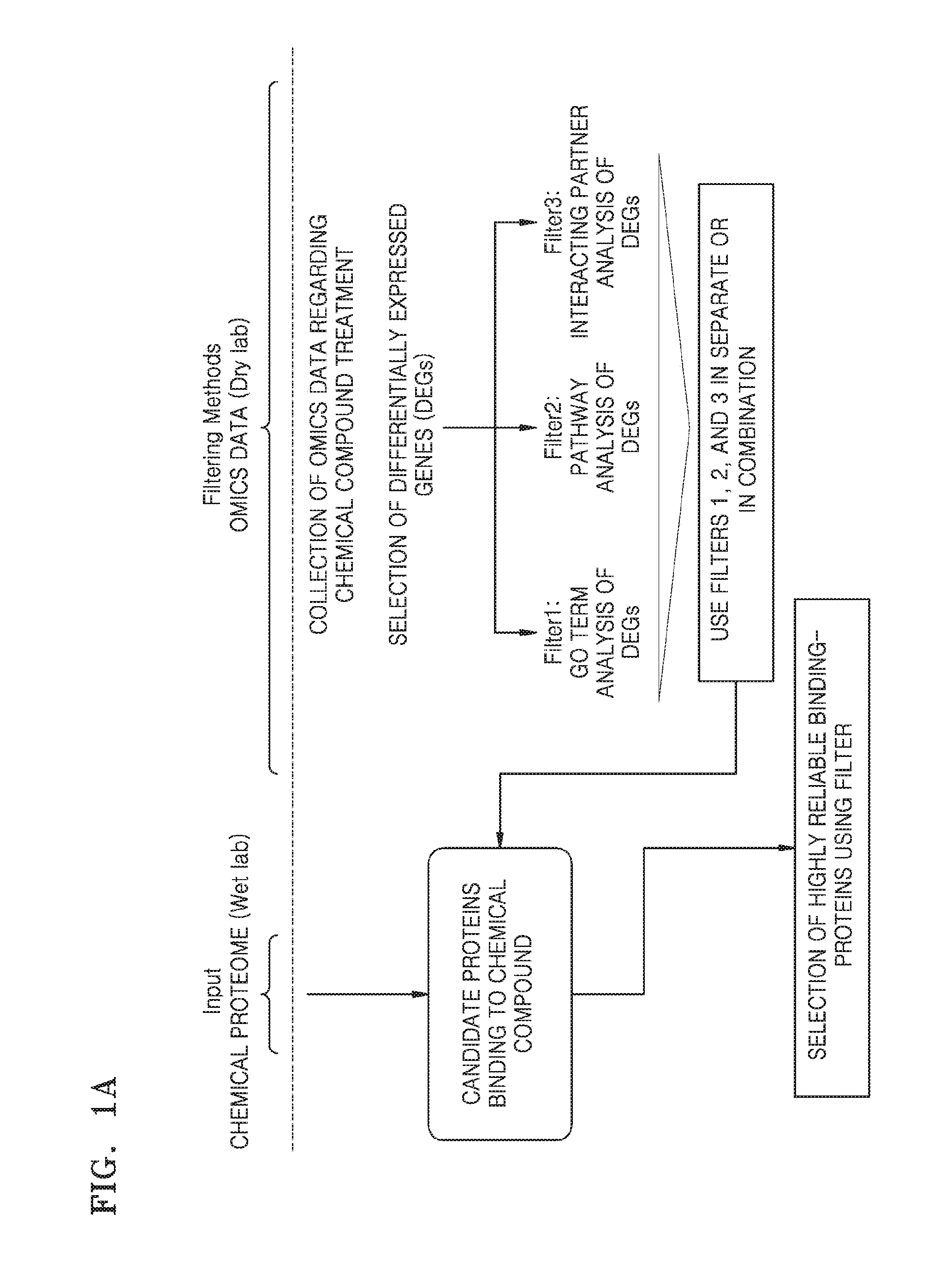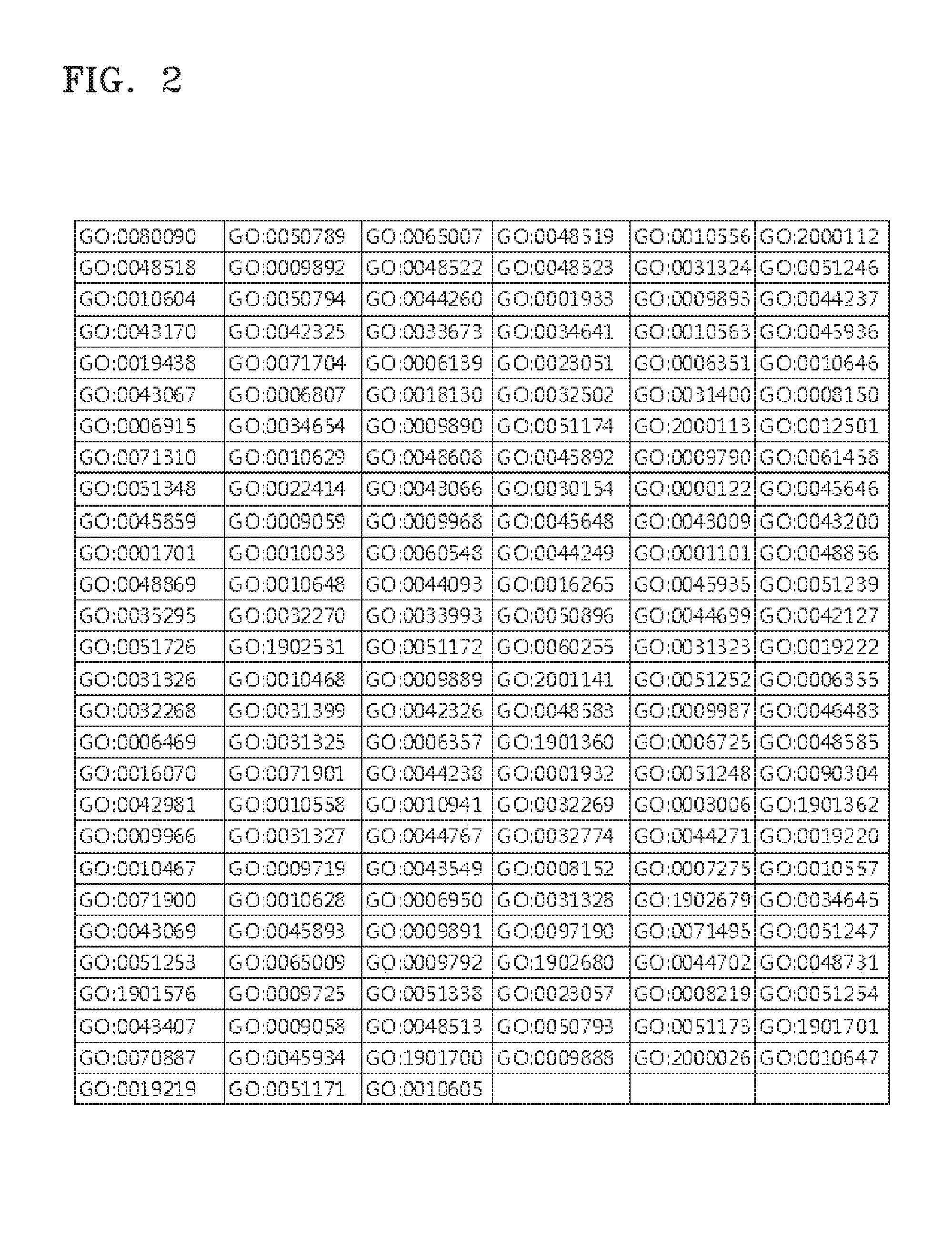Method of screening protein capable of binding to compound
a protein and compound technology, applied in the field of screening a protein capable of binding to a compound, can solve the problem of limiting the ability to isolate a highly reliable target-binding protein
- Summary
- Abstract
- Description
- Claims
- Application Information
AI Technical Summary
Benefits of technology
Problems solved by technology
Method used
Image
Examples
example 1
Selection of Dasatinib-Binding Protein
[0025]1.1. Information Obtained about Candidate Dasatinib-Binding Proteins
[0026]A list of 239 candidate proteins, which were selected as dasatinib-binding proteins based on cell-based proteome profiling using an affinity-based probe (Haibin et al., JACS, 2012, 134:3001-3014), was obtained. According to several related arts (Nat. Chem. Biol (2010), 6, 291; PNAS (2007), 104, 13283; JACS (2012), 134, 3001), it was confirmed whether each of these candidate proteins actually binds to dasatinib, and as a result, the total candidate proteins on the list were divided into 22 dasatinib-binding proteins and 217 false-positive binding proteins. The gene names of 22 dasatinib-binding proteins are SRC, HCK, PRKCB, EGFR, CSK, AURKA, AURKAPSI, Cdk18, EIF2AK2, LYN, MAPK14, BTK, YES1, PRKDC, LOC731751, TWF1, PRKACA, STAT3, STK25, CDK2, PKN2, and FYN.
[0027]1.2. Manufacture of Filter Using Omics Data
[0028]Microarray data showing gene expression changes in a K562 c...
PUM
 Login to View More
Login to View More Abstract
Description
Claims
Application Information
 Login to View More
Login to View More - Generate Ideas
- Intellectual Property
- Life Sciences
- Materials
- Tech Scout
- Unparalleled Data Quality
- Higher Quality Content
- 60% Fewer Hallucinations
Browse by: Latest US Patents, China's latest patents, Technical Efficacy Thesaurus, Application Domain, Technology Topic, Popular Technical Reports.
© 2025 PatSnap. All rights reserved.Legal|Privacy policy|Modern Slavery Act Transparency Statement|Sitemap|About US| Contact US: help@patsnap.com



